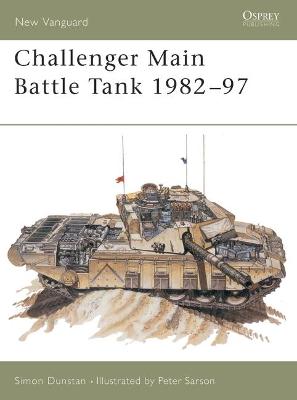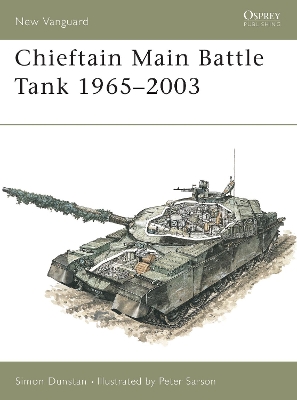Osprey New Vanguard S.
2 primary works
Book 23
The successor to the Chieftain from the 1960's, work began in 1976 on development of a new MBT specifically for the Iranian army, who needed a more capable tank than the Chieftain to suit their climatic and geographical conditions. However, once the revolution occurred in 1979 the British army was reluctantly forced to accept this new design themselves. Once in service there were technical problems resulting in various modifications. However, the Challenger would go on to great success in the Gulf War, playing crucial roles in both Desert Storm and Desert Sabre operations. In this book, Simon Dunstan examines this tank in detail, evaluating its performance both on the test range and in the field of battle.
Book 80
The concept of the Main Battle Tank emerged from the Centurion Universal tank that was developed at the end of World War II. Development of its successor began as early as 1951. The Chieftain incorporated significant innovations including a reclining driver position and two-piece ammunition for greater survivability. The tank entered service in 1967 and was the heaviest armed, armoured MBT within the NATO alliance. The Chieftain saw combat during the Iran/Iraq War, with the Kuwaitis during the 1990 Iraqi invasion and with the British Army during the Gulf War of 1990/91 as special-purpose variants. This book explores the design, development and operation of one of the most influential vehicles used in modern warfare.

